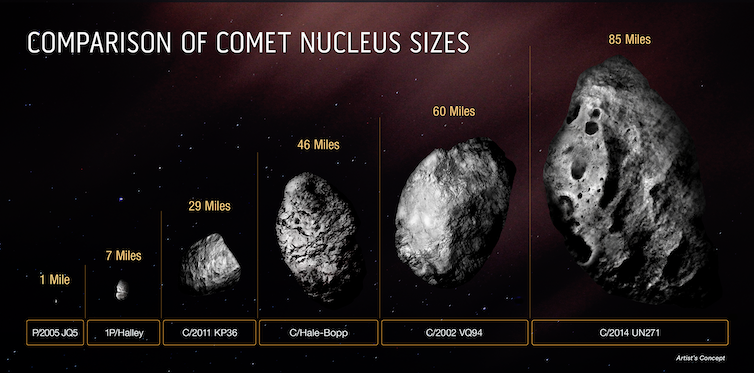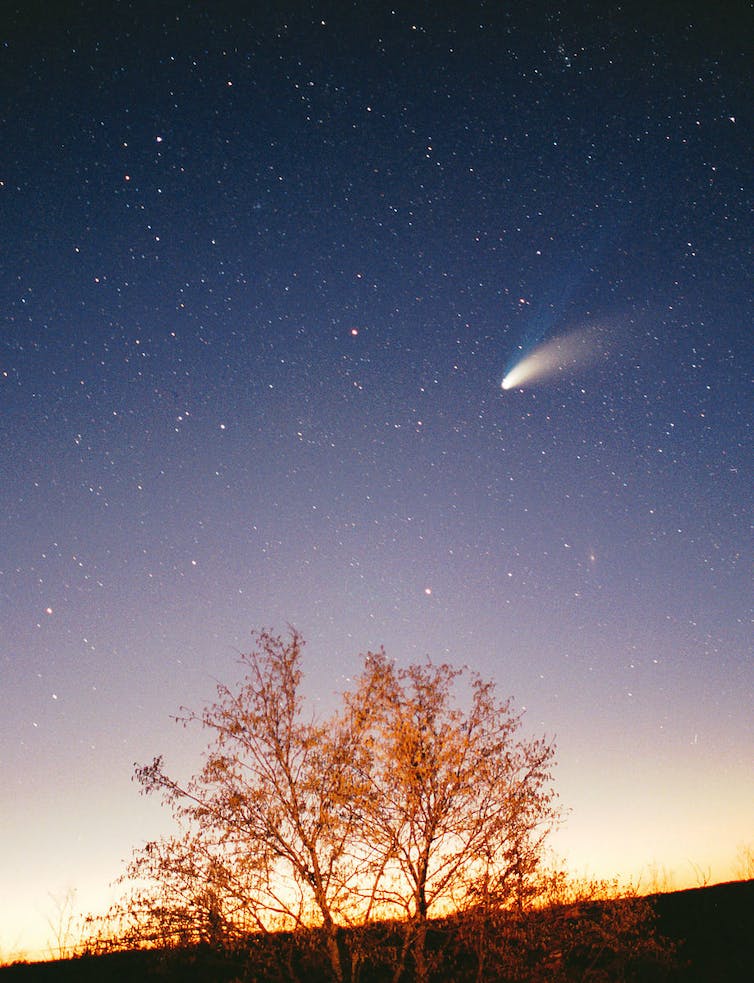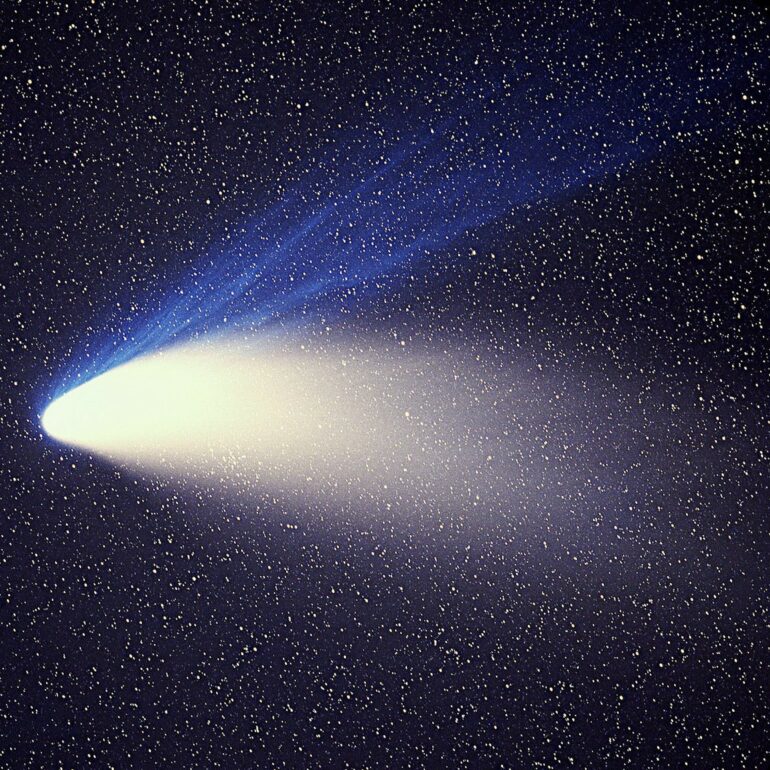When you hear the word comet, you might imagine a bright streak moving across the sky. You may have a family member who saw a comet before you were born, or you may have seen one yourself when comet Nishimura passed by Earth in September 2023. But what are these special celestial objects made of? Where do they come from, and why do they have such long tails?
As a planetarium director, I spend most of my time getting people excited about and interested in space. Nothing piques people’s interest in Earth’s place in the universe quite like comets. They’re unpredictable, and they often go undetected until they get close to the Sun. I still get excited when one comes into view.
What exactly is a comet?
Comets are leftover material from the formation of the solar system. As the solar system formed about 4.5 billion years ago, most gas, dust, rock and metal ended up in the Sun or the planets. What did not get captured was left over as comets and asteroids.
Because comets are clumps of rock, dust, ice and the frozen forms of various gases and molecules, they’re often called “dirty snowballs” or “icy dirtballs” by astronomers. Theses clumps of ice and dirt make up what’s called the comet nucleus.

Size comparison of various comet nuclei.
NASA, ESA, Zena Levy (STScI)
Outside the nucleus is a porous, almost fluffy layer of ice, kind of like a snow cone. This layer is surrounded by a dense crystalline crust, which forms when the comet passes near the Sun and its outer layers heat up. With a crispy outside and a fluffy inside, astronomers have compared comets to deep-fried ice cream.
Most comets are a few miles wide, and the largest known is about 85 miles wide. Because they are relatively small and dark compared with other objects in the solar system, people can’t see them unless the comet gets close to the Sun.
Pin the tail on the comet

Comet Hale-Bopp as seen from Earth in 1997. The blue ion tail is visible to the top left of the comet.
Philipp Salzgeber, CC BY-ND
As a comet moves close to the Sun, it heats up. The various frozen gases and molecules making up the comet change directly from solid ice to gas in a process called sublimation. This sublimation process releases dust particles trapped under the comet’s surface.
The dust and released gas form a cloud around the comet called a coma. This gas and dust interact with the Sun to form two different tails.
The first tail, made up of gas, is called the ion tail. The Sun’s radiation strips electrons from the gases in the coma, leaving them with a positive charge. These charged gases are called ions. Wind from the Sun then pushes these charged gas particles directly away from the Sun, forming a tail that appears blue in color. The blue color comes from large numbers of carbon monoxide ions in the tail.
The dust tail forms from the dust particles released during sublimation. These are…



